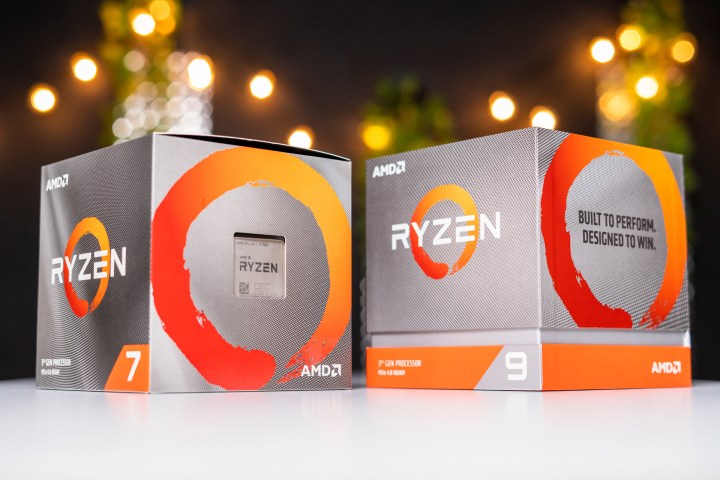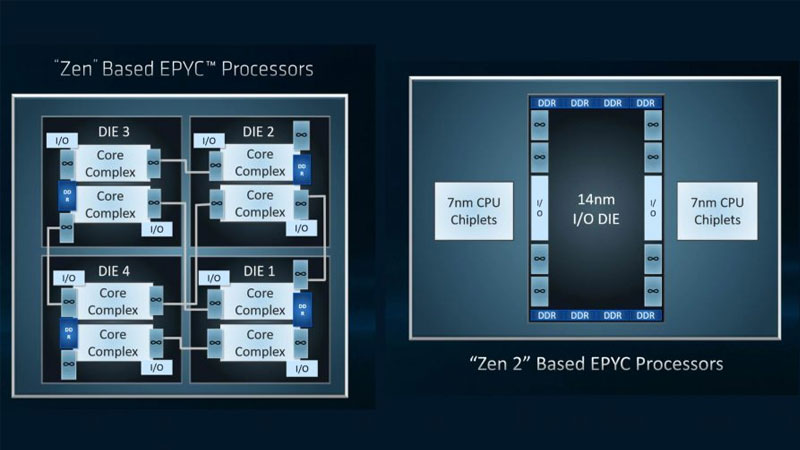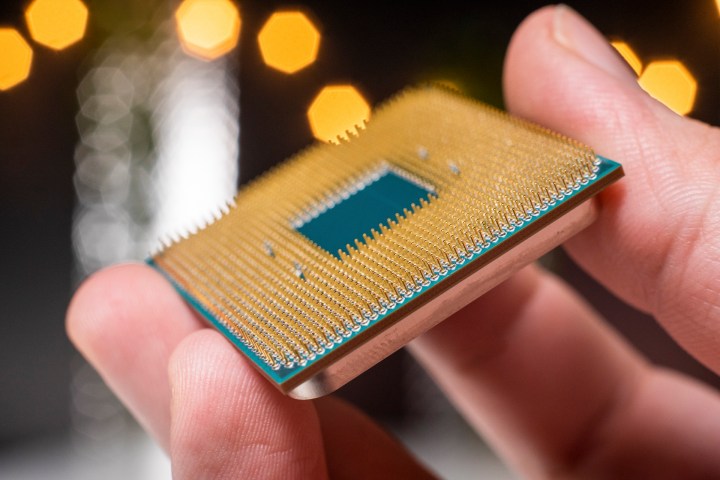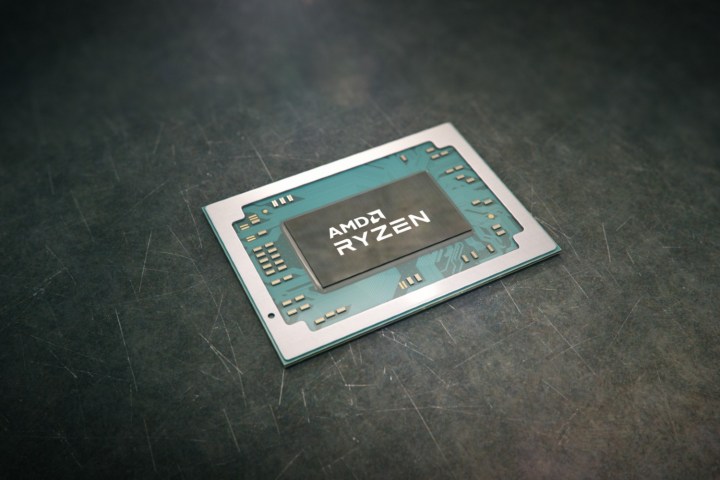AMD’s Ryzen 3000 CPUs vastly improved performance over Ryzen 1000 and 2000 CPUs when they launched in 2019. Featuring the redesigned Zen 2 architecture, AMD’s then-latest foray into its Ryzen platform proved to be more than just a slight generational improvement. AMD promised huge gains over Zen and Zen Plus, as well as over Intel’s 9th-generation chips, and remarkably, it delivered.
Although now eclipsed by its sequel, the Ryzen 5000 series, Ryzen 3000 chips are still great for gaming and work. Before picking up a Ryzen 3000 processor for your next PC build, here’s what you need to know about Zen 2, Ryzen 3000, X570, and more.
If you want to know more, you can check our guide on what a CPU is.
Pricing and availability

Launching on July 7, 2019, almost every Ryzen 3000 CPU is available to buy both singularly and as part of pre-built systems. As of late 2020, the vast majority of Ryzen 3000 processors are in stock at retailers, from the 3200G to the 3950X. Demand for the new Ryzen 5000-series processors has bled over into Ryzen 3000, however. Certain retailers might have a processor or two out of stock, but you can usually find the same processor in stock elsewhere.
As for pricing, they run the gamut. The 3200G APU starts at just $95, with its companion APU, the 3400G, starting at $144. The Ryzen 5 3600 is $195, though it can be found for as little as $170 in some great deals, while the 3600X is most commonly found at $235. The 3700X is priced at $329, while the more selectively binned 3800X is $399. The king of the hill, the 3900X, is around $550, depending on sales.
These prices are hotly competitive with Intel’s 9th-generation and 10th-generation chips. With performance being so close in many cases, AMD’s Ryzen 3000 processors often represent better value for money.
Desktop Ryzen 3000

The Ryzen 3000 series is built upon a successor architecture to the Zen and Zen Plus cores used in the first and second-generation chips, known as Zen 2. It represents a major overhaul of the design of the CPUs, as well as a die shrinking for certain components. In a similar fashion to AMD’s “Rome” Epyc server CPUs, AMD has split its next-gen chips into “chiplets,” built on TSMC’s 7 nm FinFET process. They contain the CPU cores and are paired with a 12nm input/output (I/O) processor that gives them direct connections to memory, which should reduce the latency concerns that we saw on similar designs with the Zen and Zen Plus-based Threadripper CPUs.
The full lineup of currently available AMD Ryzen 3000 desktop chips is as follows:
| CPU | Cores/Threads | Base clock | Boost clock | TDP |
| Ryzen 5 3600 | 6/12 | 3.6GHz | 4.2GHz | 65w |
| Ryzen 5 3600X | 6/12 | 3.8GHz | 4.4GHz | 95w |
| Ryzen 7 3700X | 8/16 | 3.5GHz | 4.4GHz | 65w |
| Ryzen 7 3800X | 8/16 | 3.6GHz | 4.5GHz | 105w |
| Ryzen 9 3900X | 12/24 | 3.8GHz | 4.6GHz | 105w |
| Ryzen 9 3950X | 16/32 | 3.5GHz | 4.7GHz | 105w |
Although these specifications fall short of the rumored 5GHz we heard tell of before their reveal, it’s important to note that there are other enhancements at play that contribute to an overall uptick in performance. AMD CEO Lisa Su revealed that Ryzen 3000 chips enjoy a 15% increase in instructions per clock. That, combined with the efficiency boost from moving to 7nm and the new, enhanced design of the Zen 2 cores, provides a big boost to both single-threaded and multithreaded performance for all Ryzen 3000 CPUs.
In our testing, we found that across the board, Ryzen 3000 CPUs are, blow for blow, pretty close to Intel’s best counterparts in gaming. The 3600X is just as capable as the 9600K, the 3700X as the 9700K, and the 3900X as the 9900K. While the Intel chips typically remain competitive across the board (their much higher clock speeds are a big factor there) AMD’s chips now offer more IPC than Intel’s offerings and that really shows in gaming.
That makes AMD’s Ryzen 3000 processors great for gaming, but where they really shine is in multithreaded workloads. Thanks to the massive core counts and across the board support for simultaneous multithreading (Intel’s hyperthreading is reserved for its 9th-generation Core i9 CPUs only) AMD’s chips dominate Intel in productivity workloads and even compete with its $1,000 plus HEDT chips like the 9960X.
X570 motherboards
The new chipset for third-generation Ryzen CPUs is X570. These new generation motherboards aren’t strictly necessary for Ryzen 3000 CPUs, since they’re based on the same AM4 socket (see below) as the last two generations of Ryzen platforms, but they do bring some exciting enhancements to the table.
PCIe 4.0 is a major advancement for both Ryzen 3000 and will be supported on X570 motherboards at launch. It may be added to more mid-range motherboard solutions further down the line as well as some X470 boards through a BIOS update. It will double the bandwidth of PCIe 3.0 and opens the door to greater graphical bandwidth and higher speed PCIe solid-state drives too.
These boards support up to 128GB of DDR4 memory and up to 5G Ethernet.
Some of them require dual eight-pin CPU power connectors, and due to the power requirements of the X570 chipset, the vast majority of boards require active cooling, as well as additional passive cooling across the PCB, especially on the VRMs.
AM4 Socket

Like Zen and Zen Plus platforms, the Zen 2 chips utilize the AM4 socket. That means the Ryzen 3000 CPUs can work in existing AM4 motherboards with a BIOS update.
The only caveat here is that the higher core counts of some Ryzen 3000 CPUs require greater power. That means that certain first-generation and even some second-generation boards won’t be compatible. It’s down to the manufacturer on a case-by-case basis, so make sure that your board can support the new-gen CPU if you’re planning to upgrade your chip without a new motherboard.
AMD kept its promise of using the AM4 socket through 2020, with the most recent Ryzen 5000 processors using the same socket. That means that not only will those looking to upgrade to the Ryzen 3000 series from existing Ryzen platforms not have to upgrade their motherboard at the same time, but they won’t have to do so for the Zen 3 chips, either. That could make it a much more cost-effective upgrade, and the backward compatibility opens up many more options for potential buyers.
However, not all chipsets will work with all Ryzen processors (Ryzen 5000 CPUs don’t work with X370, for example). Make sure to double-check chipset compatibility before throwing a processor into your existing motherboard.
Overclocking
Overclocking has been a major factor in CPU purchasing decisions for decades, so what can AMD’s Ryzen 3000 chips do for the enthusiast wanting more performance? It turns out, not much. AMD has tuned its Performance Boost Overdrive and automated overclocking algorithms so well that Ryzen 3000 CPUs act more like modern-day graphics cards. They boost as high as they can go taking into consideration the workload, and thermal and power headroom.
All-core overclocks that approach the rated boost clock have been possible under extreme cooling solutions, but for the most part, AMD Ryzen CPUs perform better (especially in games) when given a decent cooling solution and left to their own devices. There is some additional performance that can be unlocked by overclocking the infinity fabric between the chips and I/O die and tweaking memory, but it’s not substantial.
In comparison, Intel’s chips overclock very well. Most 9900K buyers can easily overclock them to 5GHz, but Intel boost clocks are only maintained for a minute or two, whereas AMD’s chips will stay as fast as they can go for as long as they can. While Intel’s chips might offer more headroom for those willing to tweak, the new Ryzen 3000 CPUs give you near-maximum performance right out of the box.
Threadripper 3000

AMD has already soldiered on to Ryzen 5000 with its consumer platform, but the Zen 2-based Threadripper 3000 CPUs remains its latest options for high-end desktops and workstations. There are three models available, building from where the 3950X left off.
| Mobile APU | Cores/threads | Process node | L2 & L3 cache | Base/Boost frequency | TDP |
| Ryzen Threadripper 3960X | 24/48 | 7nm | 140MB | 3.8/4.5GHz | 280w |
| Ryzen Threadripper 3970X | 32/64 | 7nm | 140MB | 3.7/4.5GHz | 280w |
| Ryzen Threadripper 3990X | 64/128 | 7nm | 288MB | 2.9/4.3GHz | 280w |
Threadripper processors are essentially two Ryzen chips stuck together, making for a processor that’s a long, large rectangle instead of a square. Because of the larger size, Threadripper 3000 isn’t compatible with the AM4 socket. You’ll need AMD’s TRX40 platform with a sTRX4 socket, which offers PCIe 4.0, quad-channel memory with ECC support, and NVMe RAID support.
Keep your cool in mind, too. Although CPU coolers have become more universally compatible in the past few years, the massive sTRX4 socket simply won’t work with most third-party coolers.
Power is also a big factor. All Threadripper 3000 chips have a massive TDP of 280w, nearly three times as much as the 3950X requires.
Threadripper 3000 is an achievement for AMD, with the 3990X pushing core and thread counts higher than ever before. The price is high, too, with the 3990X clocking in between $4,000 and $5,000, if you can find one in stock. For the vast majority of users, it’s wasted money. However, if you frequently do video transcoding or CAD work, especially professionally, the extra cores could mean more money in the bank.
Mobile Ryzen 3000

AMD kicked off its discussion of the Ryzen 3000 series CPUs at CES 2019 with the unveiling of its entire lineup of mobile CPUs. It confirmed earlier rumors from a leaked road map that suggested the Ryzen 3000 series mobile APUs would be code-named Picasso and built upon the Zen Plus architecture, rather than the Zen 2 design.
| Mobile APU | Cores/threads | Process node | L2 & L3 cache | Base/Boost frequency | Vega GPU cores | GPU frequency | TDP |
| Ryzen 7 3780U | 4/8 | 12nm | 6MB | 2.3/4.0GHz | 11 | 1,400MHz | 15w |
| Ryzen 7 3750H | 4/8 | 12nm | 6MB | 2.3/4.0GHz | 10 | 1,400MHz | 35w |
| Ryzen 7 3700U | 4/8 | 12nm | 6MB | 2.3/4.0GHz | 10 | 1,400MHz | 15w |
| Ryzen 5 3580U | 4/8 | 12nm | 6MB | 2.1/3.7GHz | 9 | 1,300MHz | 15w |
| Ryzen 5 3550H | 4/8 | 12nm | 6MB | 2.1/3.7GHz | 8 | 1,200MHz | 35w |
| Ryzen 5 3500U | 4/8 | 12nm | 6MB | 2.1/3.7GHz | 8 | 1,200MHz | 15w |
| Ryzen 3 3300U | 4/4 | 12nm | 6MB | 2.1/3.5GHz | 6 | 1,200MHz | 15w |
| Ryzen 3 3200U | 2/4 | 12nm | 5MB | 2.6/3.5GHz | 3 | 1,200MHz | 15w |
| Athlon 300U | 2/4 | 14nm | 5MB | 2.4/3.3GHz | 3 | 1,000MHz | 15w |
The Ryzen 3000 mobile CPUs come in dual-core and quad-core varieties, with some sporting simultaneous multithreading for up to eight supported threads at one time. Boost clocks reach up to 4GHz on the fastest 3780U and 3750H CPUs, with entry-level options sitting well south of 3GHz.
Since these are based on the 12nm Zen Plus architecture, rather than the Zen 2 that the desktop 3000-series is built on, the performance improvement over the 2000-series Ryzen mobile chips is unlikely to be as dramatic as in the desktop space. However, the increases in clock speed will provide a small bump in power in compatible laptops.
As with that first-generation though, these chips are all AMD APUs, rather than just dedicated CPUs. They come bundled with Vega graphics cores, which make them relatively capable gaming chips. They’re not enough to make their systems gaming laptops, but they’re certainly more capable than Intel’s traditional UHD 620 onboard graphics.
The Ryzen 7 3780U, with its 11 Vega cores will be the most capable of the lot, but will only be found in Microsoft’s Surface Laptop 3, as an AMD Ryzen Microsoft Surface Edition processor. The same goes for the 3580U.
As exciting as that is though, AMD’s more recent Ryzen 4000 laptops are much more capable and are worth the upgrade if you can find the right deal, as they improve general compute and GPU performance considerably.




